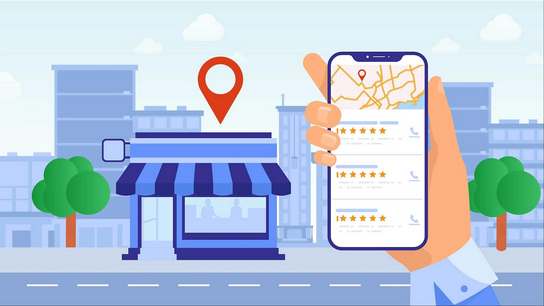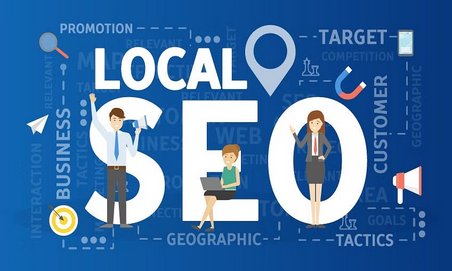
Modern SEO – Welcome to the Age of Search Everywhere Optimization

It is a matter of not too long ago when SEO was simple. Where you just picked a keyword, stuffed it into your content, and waited for Google to rank you.
But today? That playbook is dead.
Search is not just happening on Google anymore. People search on YouTube, TikTok, Amazon, Instagram, Reddit, and even AI assistants like ChatGPT and Gemini. And here’s the kicker: these platforms do not follow the same old “10 blue links” formula.
|
Recent surveys show that 27% of U.S. users and 13% in the UK now use AI tools like ChatGPT instead of Google for some of their queries (TechRadar, 2024). For questions that require explanations or synthesis — like “How does inflation affect rent prices?” or “Best budget phones for travel?” — AI chatbots are becoming the go-to. Resource: Medium.com |
This is the new reality: Search Everywhere Optimization (SEO 2.0).
If you want traffic, visibility, and customers in this era, you cannot just optimize for Google. You need to optimize for everywhere your audience searches.
You’re about to learn exactly how to do that.
Understand the New Search Landscape
The biggest mistake SEOs make today? Still treating Google as the only game in town.
Here’s the problem:
Your audience does not stick to one platform anymore. They discover products on TikTok, compare reviews on YouTube, check pricing on Amazon, and Google for background research.
If you’re only optimizing for Google, you’re leaving huge visibility gaps.
The solution:
Let us imagine that SEO is Search Everywhere Optimization. It means we just have to solve people's queries no matter where they are on Snapchat, TikTok, Google, Yelp, MS Edge, and anywhere else.
Example:
- Nike does not just rely on Google rankings. They dominate TikTok with short “sneaker stories,” run YouTube product deep dives, and create Amazon-optimized listings.
- Independent creators are doing the same. Food bloggers aren’t just blogging—they’re posting TikToks, pinning recipes on Pinterest, and uploading step-by-step videos on YouTube Shorts.
Insert diagram here → “Search Ecosystem Map: Google, Social Search, AI, Marketplaces.”
Credit:Whitespark
👉 Pro Tip: Audit your customer journey. Where do they search first? Google? Amazon? Reddit? That’s where you need to be visible.
Build a “Platform-Specific” SEO Strategy
Each platform has its own algorithm, ranking signals, and user behavior. You cannot copy-paste one strategy across all of them.
Google SEO (Still King, But Changing)
- Topical authority, EEAT (Expertise, Experience, Authority, Trust), and high-quality backlinks are now important.
- You can create topic clusters rather than sporadic blog entries. Let’s have an example here: if you own a fitness website, make a pillar page on "Strength Training" and include links to in-depth instructions on deadlifts, squats, and rehabilitation.
- Insert screenshot of a topic cluster map.
YouTube SEO
- Optimize for click-through rate (titles + thumbnails).
- Engagement is everything: comments, watch time, retention.
- Example: MrBeast optimizes titles like “I Spent 50 Hours Buried Alive” (keyword-rich, curiosity-driven).
TikTok SEO
- TikTok is now a search engine.
- Keywords in captions, on-screen text, and spoken words matter.
- Example: Type “best cafes in NYC” on TikTok—you will see content optimized exactly for that keyword.
Amazon SEO
- Rankings depend on sales velocity, reviews, and CTR.
- Keywords in titles + bullet points = must-have.
- Example: Search “wireless earbuds”—the top sellers have thousands of reviews and optimized bullet points.
Credit: EmbedSocial
👉 Important: Instead of asking “How do I rank on Google?”, start asking: “Where is my audience searching, and how do I rank there?”
Optimize Content for AI-Powered Search
Here’s the tricky part: AI tools like ChatGPT, Gemini, and Perplexity are reshaping how people search.
Instead of typing “best project management tools” into Google, users ask ChatGPT:
“I’m a small business owner. Recommend me the best project management software under $50/month.”
And AI gives them a direct answer.
The risk?
AI platforms may never even show your website link.
The solution?
Feed AI with content it trusts.
- Add schema markup so AI assistants can parse your content.
- Publish data-backed insights, original research, and statistics.
- Even if AI does not link, being named builds trust and demand.
Case Study:
|
In January 2023, tech publication CNET quietly began publishing AI-generated articles about financial topics. In January 2023, CNET quietly began publishing AI-generated financial articles under a generic byline, only to face a major backlash when readers discovered numerous factual errors—including mistakes on loan interest and CD terms. A Stanford 2025 study later revealed that AI content contains 4.3 times more errors than human-written work, with 37% of AI articles including fabricated data. The fallout was severe: CNET had to correct over half of its 77 AI-generated pieces, consumer trust plummeted (72% now distrust AI-heavy brands), and companies paid over $15 million in misinformation-related settlements in 2024. The lesson? While AI can assist with drafts and research, human oversight is critical—experts must fact-check, editorial reviews must be rigorous, and transparency with audiences is non-negotiable. Tools like the UNmiss AI Content Detector can help catch errors, but without strong guardrails, AI-generated content risks credibility and compliance with Google’s E-E-A-T (Experience, Expertise, Authoritativeness, Trust) standards. The path forward isn’t AI alone—it’s AI + human collaboration. |
👉 Pro Tip: Write with “answer-first” formatting. Use clear headings, FAQs, and concise summaries—so AI can easily pull your content.
Leverage “Search Everywhere” Content Formats
Different platforms reward different content types. So your content needs to be multi-format.
Blog → Video → Social Clip → Infographic
Example workflow:
- Write a blog post: “10 Morning Routines Backed by Science.”
- Turn it into a YouTube video (script based on blog).
- Cut short clips for TikTok & Reels.
- Repurpose stats into a Pinterest infographic.
Suddenly, one idea = presence across 4 platforms.
Credit: Scalenut
👉 Pro Tip: Always ask: “How can I repurpose this content across 3 more platforms?”
Focus on Visibility, Not Just Rankings
Old SEO was about ranking #1. Modern SEO is about being visible everywhere.
That means:
- Showing up in Google’s “People Also Ask.”
- Having TikToks that trend on discovery feeds.
- Getting featured in Amazon’s “Top Picks.”
- Appearing in AI answers.
Checklist for Visibility:
✅ Google: Optimize for snippets, FAQs, clusters.
✅ YouTube: CTR + watch time.
✅ TikTok: Keywords in captions & speech.
✅ Amazon: Reviews + sales velocity.
✅ Reddit/Quora: Be part of conversations.
Pro Tip: Stop tracking only “Google keyword rankings.” Start tracking share of search across platforms.
Build Search Everywhere Authority
Algorithms across platforms have one thing in common: They reward authority.
How to build it:
- Google: Earn high-quality backlinks and publish original insights.
- YouTube: Build subscriber trust with consistent uploads.
- TikTok/Instagram: Ride trends early, but tie them back to your niche.
- Amazon: Generate reviews and social proof.
Framework: The 3A Rule
- Authority → Consistent, credible content.
- Attention → Capture eyeballs with engaging formats.
- Adaptability → Pivot fast when platforms change.
Credit: Backlinko
Resources & Tools for Search Everywhere Optimization
When it comes to Search Everywhere Optimization, strategy alone would not get you far.
You need the right tools to execute faster, stay organized, and measure what’s actually working.
Think of these tools as your “SEO command center” — they take the guesswork out of optimization and give you real, actionable insights.
Without them, you’d spend countless hours pulling data manually, testing ideas blindly, and often missing out on quick wins.
With them, you can:
- Spot opportunities your competitors overlook.
- Automate repetitive tasks (like keyword tracking and content auditing).
- Create content that’s not just optimized for algorithms but genuinely helpful to users.
- Keep your workflow streamlined, so nothing slips through the cracks.
The best part?
Many of these platforms offer free versions or trials, so you do not need a big budget to get started.
Below, I’ve grouped the most useful tools by platform type, so you know exactly where to plug them into your strategy.
Google SEO Tools
|
Ahrefs |
A powerhouse for keyword research, backlink analysis, and competitor insights. It shows you exactly what’s driving traffic for your rivals and helps you replicate their wins. |
|
SEMrush |
Similar to Ahrefs, but also strong on PPC data and site audits. Great for a complete digital marketing view, not just organic SEO. |
|
SurferSEO |
An on-page optimizer that analyzes SERPs in real time and tells you how to structure content for higher rankings. Perfect for writers who want clear, data-backed recommendations. |
|
Google Search Console |
The free must-have tool from Google. It tells you how your site is performing in search, what queries bring traffic, and any technical issues holding you back. |
|
Google Analytics 4 |
Beyond traffic tracking, GA4 helps you measure engagement, conversions, and user behavior — all critical to improving your content funnel. |
YouTube SEO Tools
|
TubeBuddy |
Helps optimize your videos with keyword suggestions, A/B testing for thumbnails, and tag recommendations. |
|
VidIQ |
Strong on competitor tracking and trend spotting. Great if you want to know what’s working for top creators in your niche. |
|
Canva (for Thumbnails) |
A design tool to create click-worthy thumbnails, channel art, and social promos — no design degree needed. |
|
KeywordTool.io (YouTube mode) |
Generates hundreds of video keyword ideas from YouTube’s auto-suggest feature, helping you find long-tail opportunities. |
TikTok & Instagram Tools
|
TrendTok |
Tracks viral trends before they explode. Helps you jump on opportunities while they’re still fresh. |
|
CapCut |
A free video editing app (from TikTok’s parent company) that makes editing short-form videos fast and professional-looking. |
|
Canva Templates |
Pre-built Instagram Reels, Story, and Post templates make your content look branded and polished. |
|
Later / Buffer |
Scheduling tools to plan and auto-publish your content across Instagram, TikTok, and other socials. |
|
Hashtagify |
Helps you identify the most effective hashtags to maximize discoverability. |
Amazon SEO Tools
|
Tool Name |
Description |
|
Helium10 |
A complete toolkit for Amazon sellers, offering keyword research, product listing optimization, and PPC campaign management. |
|
JungleScout |
Ideal for identifying profitable niches and analyzing competitor performance in the Amazon marketplace. |
|
AMZScout |
Provides product research, sales tracking, and supplier data to help sellers make smarter decisions. |
|
SellerApp |
All-in-one platform for listing optimization, keyword tracking, and PPC automation tailored to Amazon sellers. |
Social Media & Content Repurposing Tools
|
Tool Name |
Description |
|
Hootsuite |
Manage multiple social accounts, schedule posts, and analyze performance metrics in one dashboard. |
|
Repurpose.io |
Automatically transforms one piece of content (e.g., a YouTube video) into shorter clips for TikTok, Instagram, and LinkedIn. |
|
BuzzSumo |
Great for content discovery, trend tracking, and influencer research to see what’s resonating in your niche. |
Productivity & Workflow Tools
|
Tool Name |
Description |
|
Notion |
A flexible workspace for creating content calendars, storing SEO research, and tracking progress. |
|
Trello |
Visual kanban boards to organize SEO and content workflows in a simple, drag-and-drop style. |
|
Asana |
A more advanced task management tool with workflow automation features for larger SEO teams. |
|
Slack |
Keeps communication streamlined for teams, with channels for SEO projects and integrations with other tools. |
|
ClickUp |
An all-in-one productivity platform combining project management, docs, and automation for SEO campaigns. |
The Future of SEO is Everywhere
The days of “just ranking on Google” are gone.
Modern SEO = Search Everywhere Optimization. That means showing up on every platform your audience uses to search—Google, YouTube, TikTok, Amazon, AI, and beyond.
If you follow the steps above—
- Understand the new search landscape
- Build platform-specific strategies
- Optimize for AI-powered search
- Repurpose content across formats
- Focus on visibility, not just rankings
- Build authority everywhere
—You will future-proof your traffic, visibility, and business.
Your Good-to-Go Steps
- Audit your current search presence. Where are you missing? (Google, TikTok, YouTube, Amazon, AI)
- Pick 1–2 new platforms to optimize for this quarter.
- Repurpose one piece of content across at least 3 formats this week.



Leave a reply